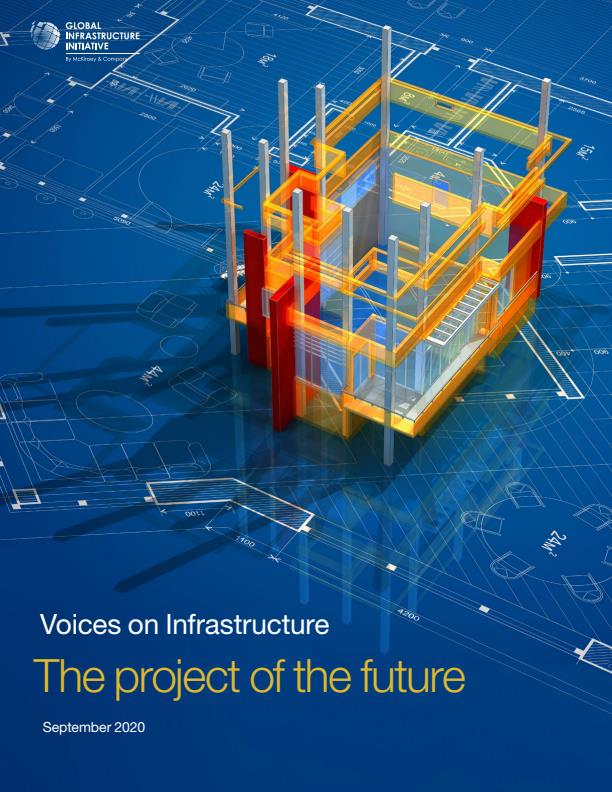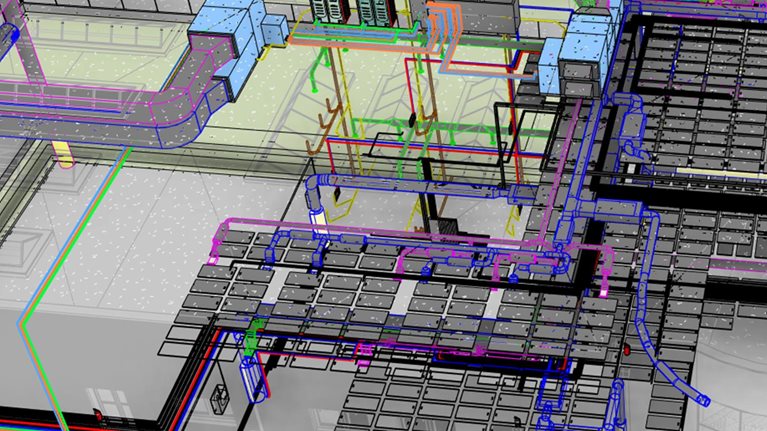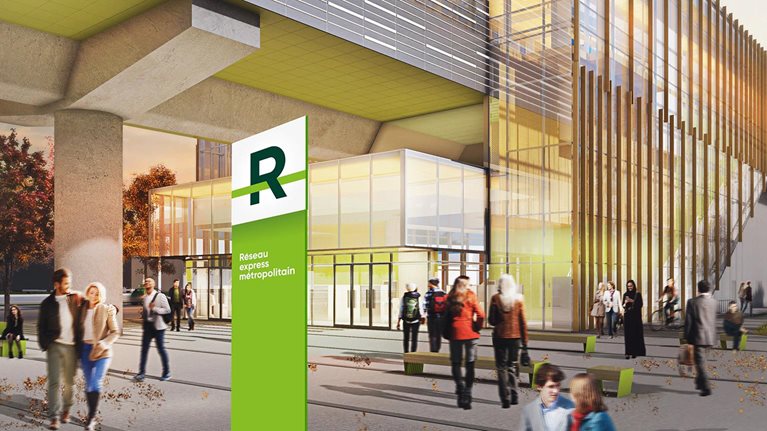The COVID-19 crisis is straining the fiscal resources of governments worldwide, but they still have to find the money to finance essential current and future infrastructure projects. In this interview with McKinsey’s Tony Hansen and Rob Palter, Michael Sabia of the Canada Infrastructure Bank (CIB) discusses the new investment models that the current environment will demand, especially balancing the tension between attracting private capital and safeguarding the interests of citizens.
McKinsey: You were recently appointed chair of the CIB. Could you describe the role of the CIB in the Canadian infrastructure market?
Michael Sabia: The CIB is essentially a development bank designed to bring private capital into the financing of infrastructure in Canada, either at the initiation of a project or, if necessary, to prove the financial viability of a market and to bring private capital in later on.
We also expect to get our capital back. We’re not in the business of giving it away. But as one would expect, we are prepared to provide that capital at below-market rates in the interest of causing projects to occur. Today, we are especially interested in assets that contribute to increased digital connectivity and the transition to a lower carbon economy.
Finally, the bank is intended to be a center of expertise on infrastructure in Canada that can act as a source of new ideas and advise all levels of government.
McKinsey: How does the CIB fit in among grants or other financing methods offered by governments?
Michael Sabia: If we think along the lines of a continuum, projects that are purely commercial are at one end. At the other end are projects that require government expenditure—pure grants—to make them happen. Grants are the traditional financing model for infrastructure. Somewhere in the middle are projects that can be made commercially viable and can become attractive to institutional investors. The sweet spot for the bank is projects of that kind. All they need is a financial push to get them over that threshold.
McKinsey: Is there enough funding or commitment in the public sector to maintain infrastructure delivery and operations as we know it?
Michael Sabia: Let me address the second part of the question: should we actually be thinking about maintaining infrastructure delivery and operations “as we know it?” My perspective on it would be no. The traditional delivery models for infrastructure have revolved around government, a public authority essentially funding infrastructure projects, sometimes with a little private capital, sometimes not. That’s led to slow delivery and escalating costs. In the world that we’re moving toward, neither of those are going to work, or neither of them will be affordable.
So this is a time to challenge the notion of “as we know it.” An example I’ve used is an urban light-rail transit project in Montréal—the Réseau express métropolitain (REM), designed, owned, and operated by an institutional investor. It is projected to be completed at about 60 percent of prior cost projections, CAD $6 billion to CAD $6.5 billion, and in about half the time required. It’s time to think differently and innovatively about alternative models for delivering infrastructure.
McKinsey: What do you see as the role of infrastructure in stimulating economic recovery in the aftermath of COVID-19?
Michael Sabia: In many governments’ recovery or economic-renewal plans, infrastructure is seen—as it should be—as important in terms of economic stimulus: the creation of jobs and creation of income, for example. That’s true in Canada and, I believe, for a lot of other governments as well.
In many of these countries, the focus of this kind of stimulus will be around climate—first, because it is so high on the public agenda now and, second, because there’s growing recognition among governments that infrastructure can shape what a national economy looks like down the road.
An interesting question is whether governments will be able to spend enough to fully seize the opportunity that is in front of them, specifically with respect to climate change. That’s where different kinds of institutions like the Canada Infrastructure Bank play a particularly important role because they are all about finding ways to bring private capital into these infrastructure projects.

Voices on Infrastructure: The project of the future
McKinsey: In such an uncertain world, how can stakeholders better understand and manage the risks involved in large capital projects that rely on long-term projections?
Michael Sabia: It’s undeniable that uncertainty is a factor in the pricing and feasibility of infrastructure projects. That probably comes in two particular categories. The first is traditional exogenous uncertainty. We’ve always been aware of them but I don’t know whether or not we’ve ever taken them seriously enough.
Take Eurostar, the European high-speed rail service. For years, passenger volumes at Eurostar continued to go up by 2 or 3 percent a year, almost without regard to the economic cycle. And then two completely unpredictable events occurred: one, terrorist attacks in Paris, and two, Brexit—both purely exogenous events. So that’s one band of uncertainty, risks that are difficult to price.
The second category are risks like COVID-19 and how they will change the world—or rather, the role of cities in our economies and the degree of concentration within cities. This could influence thinking about infrastructure in cities, and it certainly raises questions about transit.
As we begin to exit this crisis and, as we learn more about managing pandemics, I’m not sure that I see a world in which cities become less important than they have been, which is to say, as motors of economic growth and development.
If cities continue to be magnets and motors, then—take the transit example—people may now prefer to take their cars in light of the pandemic. The limit to that is road capacity and congestion, and I don’t see a lot of governments in the world building massive new highways. So what may happen is that public transit is going to continue to be important. What may change is the internal design of transit equipment—but public transit is a long way from becoming less necessary and valuable.
McKinsey: Factoring in economic, social, and environmental imperatives, what approach can stakeholders follow in thinking about stimulus spending on infrastructure?
Michael Sabia: In conversations that I have had with senior officials, both in Canada and outside, the word “stimulus” is taking on a different meaning. In the past, there have been lots of examples of governments spending money for short-term job creation, sometimes with dubious value in the infrastructure that was built. Now people are focused on the shaping capacity of infrastructure. How can you alter and cause to evolve the shape and composition of an economy? There’s a much more strategic perspective on this, which I think is an extremely important development.
That being said, what does that mean? We should see several major priorities around that shaping role. The first I’ve already mentioned, which is a heavy emphasis on climate: electrification, renewable power, cleaning up emissions from cities.
Another, less obvious point is the role of infrastructure investment in reducing trade friction and costs. It’s true that the global trading system is evolving, but that doesn’t mean that trade itself becomes less important. It just means that the pattern of trade changes.1 Therefore, continuing to focus on the efficiency of trading corridors will be key. If economic growth gets harder to come by, lowering those costs and becoming more trade-efficient will be increasingly important for virtually all countries.
Then, one thing that’s come out of this pandemic crisis is the importance of broadband connectivity. In a lot of countries, this issue will be addressed adequately by commercial suppliers of bandwidth. In other countries, that may require public-sector infrastructure investment. In a sparsely populated, large country like Canada, that’s probably going to be important. It’s less so in a dense, smaller country because it will be commercially viable for telecom carriers to do it themselves. And along with more connectivity comes data and the emerging importance of new platforms and infrastructure assets to realize the value of data.
McKinsey: Have you considered how to manage the tension between making decisions on projects happen faster—siting, permitting, and environment reviews, for example—with respect for the democratic process and the benefit that the approval process provides to the well-being of citizens?
Michael Sabia: That’s an important question. I’ll cite my experience with the REM project that we developed at Caisse de dépôt et placement du Québec. We fully respected those processes, but because we were the project planners, the project moved faster than it would otherwise have, and we were able to shrink the total elapsed time from project conception to the beginnings of construction.
I keep coming back to this point: standard operating procedures are the enemy. That’s why models and who delivers these projects has to change—because it is possible to move faster than we’ve all gotten used to. And that doesn’t involve compromising important democratic processes such as environmental assessments, where people, quite legitimately, have a right to express their views on whether something is good or bad or disruptive. It’s the processes in the projects and inside of governments that are so slow, and they need to be accelerated.
McKinsey: In what ways do you think the project of the future will be different from the project of today?
Michael Sabia: Now is an enormously interesting time for creativity, innovation, and new ideas around models for delivery. Given the fiscal constraints that governments face and the importance of infrastructure in both stimulating and reshaping economies, the traditional way of thinking about this is no longer going to meet anybody’s needs. So we must consider financial models that continue to use some government money to leverage other peoples’ money.
Perhaps it’s serendipity, but there are now gigantic pools of long-term-oriented institutional capital looking for a reasonably steady return. It’s critical because any institutional investor thinking about the future is going to be reallocating capital away from fixed income and toward other reliable, cash-flow-generating kinds of investments.
So that creates a moment to be seized between the need and value of infrastructure, the fiscal constraints that governments are under, and the necessity therefore of finding models that leverage and bring these vast pools of capital into infrastructure projects. That’s going to lead us to situations where public infrastructure ends up being designed, financed, owned, and operated by long-term institutional capital, probably working in conjunction with government so that the public interest is protected.
One of the issues is going to be how we deal with the issue of financial risk sharing between those sources of private capital and public authorities. The real question is going to be finding the right balance and distribution of risk between what public authorities and institutional investors are willing to assume. In sum, this is a fantastically interesting period of time because conditions are going to force us to innovate.
This article was part of the Global Infrastructure Initiative’s September 2020 issue of Voices.



